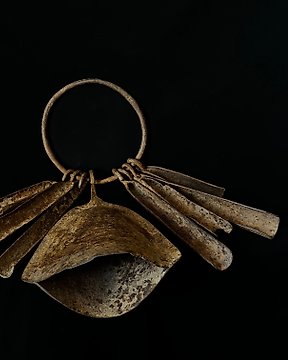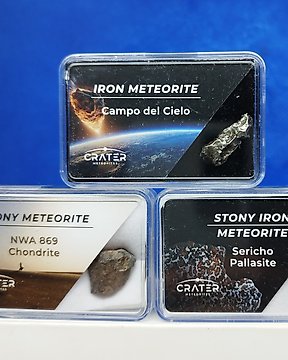muy contento con la compra y el envío, rápido y seguro, como merecen las 4 piezas históricas que adquirí, con toda su documentación, vendedor muy muy recomendable, un placer
查看翻译墨西哥特奥蒂瓦坎 Terracotta 微型面具,古典时期,公元 200 - 700 年。高 4.2 厘米。西班牙进口许可证。TL 测试
编号 88482891



Miniature mask.
- Nice Quality! -
Teotihuacan, Mexico, Classic Period, 200 - 700 AD.
Terracotta
4.2 cm height.
PROVENANCE: Private collection, Dijon, France.
CONDITION: Good condition. Without restorations.
BIBLIOGRAPHY:
- BERLO, J.C. (ed.). Art, Ideology, and the City of Teotihuacan. Dumbarton Oaks. 1992.
- BERRIN, K.; PASZTORY, E. (eds.). Teotihuacan: Art from the City of the Gods. Thames & Hudson. 1993.
- SCOTT, S. The Corpus of Terracotta Figurines from Sigvald Linne’s Excavations at Teotihuacan, Mexico (1932 & 1934-35). Ethnographical Museum of Sweden. 2001.
PARALLELS:
Fig. 1 Statuette of a seated figure. Teotihuacán, Mexico, 400-700 AD. Terracotta. Museo de América, Madrid, inv. 1985/01/133.
Fig. 2 Head. Teotihuacán, Mexico, 300-650 AD. Terracotta. Museum of Avila, Spain, inv. A/70/9.
Fig. 3 Articulated statuette. Teotihuacán, Mexico, AD 400-600. Terracotta. Los Angeles County Museum of Art (USA), inv. AC1996.146.47.
DESCRIPTION:
Head made of terracotta representing a character with fine features, with slit-shaped eyes and a long, finely modeled nose. He sports a shaved skull to the crown and large circular ear flaps, which project towards the front. The prominent bezote, which covers the entire mouth and is adorned with relief motifs, indicates that it is the representation of a ruler.
Teotihuacán was one of the largest cities in Mesoamerica during the Classic Period (ca. AD 200-600), a political, economic and religious centre with a multi-ethnic population of up to 100,000 inhabitants. It was located in the Central Highlands, within the Valley of Mexico, and its flourishing dates from approximately 150 BC to 700 AD. Its name means 'place where men become gods', as it was here that the teutl, the deified heroes, were buried.
Teotihuacán was a landmark in the millennia-long history of Mesoamerica; it was imposing in its scale and political and cultural importance, but also in its rigorous planning around religious buildings and the rites and ceremonies associated with them. Our current knowledge of the city is, however, limited; it has not been fully excavated, and many aspects of its culture have come down to us only through Aztec sources, unreliable because of their probable mythical and political motivations. It is therefore impossible to be sure that Teotihuacán directly controlled a territory, although its cultural and religious influence is evident in contemporary cities such as Tikal in Guatemala and Monte Albán in Oaxaca.
The end of the great city came around the year 700, after a period of political instability, internal social conflicts and climatic changes that affected the whole of northern Mesoamerica. Nevertheless, its ruins were a destination for explorers even before the Spanish conquest; Teotihuacán artefacts have been found at Toltec and Mexica sites to attest to this, and Postclassic Mexica mythology includes Teotihuacán as the setting for such fundamental myths as the legend of the Suns.
Teotihuacan terracotta statuettes are one of the most interesting artistic manifestations of what was the first of the great Mesoamerican cities. While their Zapotec and Mayan neighbours left portraits of their leaders and written chronicles, in Teotihuacan there are no historical representations within the ceremonial art, but an infinity of small figures and heads have been preserved which constitute an enormous source of information about the life and beliefs of the city's inhabitants. Intended for private worship and produced from an early date, these small terracottas evolved into increasingly dynamic and naturalistic forms; although they follow a general canon, they have innumerable variants that constitute a very rich iconography that has not yet been fully studied to this day. Some of the recurring features are the hybridisation of human and animal features, the repetition of certain clothing and ornaments suggesting affiliation to a particular social group, and even morphological details that could represent specific individuals.
Made by hand, moulded or a combination of both techniques, many of these statuettes are characterised by the schematic representation of the anatomy, which suggests that they may have originally been dressed (fig. 1). The faces of both the statuettes and the heads (fig. 2), on the other hand, show a greater level of detail. Many statuettes with articulated arms and legs have also been found (fig. 3), possibly also originally clothed. The abundance and variety of these pieces suggests the existence of a certain craft industry developed around the ceremonial centre of Teotihuacán, which must have exported its production beyond the city's territory, judging by the evidence from sites throughout Mesoamerica.
Notes:
- The piece includes authenticity certificate.
- The piece includes Spanish Export License.
- The seller guarantees that he acquired this piece according to all national and international laws related to the ownership of cultural property. Provenance statement seen by Catawiki.
卖家故事
Miniature mask.
- Nice Quality! -
Teotihuacan, Mexico, Classic Period, 200 - 700 AD.
Terracotta
4.2 cm height.
PROVENANCE: Private collection, Dijon, France.
CONDITION: Good condition. Without restorations.
BIBLIOGRAPHY:
- BERLO, J.C. (ed.). Art, Ideology, and the City of Teotihuacan. Dumbarton Oaks. 1992.
- BERRIN, K.; PASZTORY, E. (eds.). Teotihuacan: Art from the City of the Gods. Thames & Hudson. 1993.
- SCOTT, S. The Corpus of Terracotta Figurines from Sigvald Linne’s Excavations at Teotihuacan, Mexico (1932 & 1934-35). Ethnographical Museum of Sweden. 2001.
PARALLELS:
Fig. 1 Statuette of a seated figure. Teotihuacán, Mexico, 400-700 AD. Terracotta. Museo de América, Madrid, inv. 1985/01/133.
Fig. 2 Head. Teotihuacán, Mexico, 300-650 AD. Terracotta. Museum of Avila, Spain, inv. A/70/9.
Fig. 3 Articulated statuette. Teotihuacán, Mexico, AD 400-600. Terracotta. Los Angeles County Museum of Art (USA), inv. AC1996.146.47.
DESCRIPTION:
Head made of terracotta representing a character with fine features, with slit-shaped eyes and a long, finely modeled nose. He sports a shaved skull to the crown and large circular ear flaps, which project towards the front. The prominent bezote, which covers the entire mouth and is adorned with relief motifs, indicates that it is the representation of a ruler.
Teotihuacán was one of the largest cities in Mesoamerica during the Classic Period (ca. AD 200-600), a political, economic and religious centre with a multi-ethnic population of up to 100,000 inhabitants. It was located in the Central Highlands, within the Valley of Mexico, and its flourishing dates from approximately 150 BC to 700 AD. Its name means 'place where men become gods', as it was here that the teutl, the deified heroes, were buried.
Teotihuacán was a landmark in the millennia-long history of Mesoamerica; it was imposing in its scale and political and cultural importance, but also in its rigorous planning around religious buildings and the rites and ceremonies associated with them. Our current knowledge of the city is, however, limited; it has not been fully excavated, and many aspects of its culture have come down to us only through Aztec sources, unreliable because of their probable mythical and political motivations. It is therefore impossible to be sure that Teotihuacán directly controlled a territory, although its cultural and religious influence is evident in contemporary cities such as Tikal in Guatemala and Monte Albán in Oaxaca.
The end of the great city came around the year 700, after a period of political instability, internal social conflicts and climatic changes that affected the whole of northern Mesoamerica. Nevertheless, its ruins were a destination for explorers even before the Spanish conquest; Teotihuacán artefacts have been found at Toltec and Mexica sites to attest to this, and Postclassic Mexica mythology includes Teotihuacán as the setting for such fundamental myths as the legend of the Suns.
Teotihuacan terracotta statuettes are one of the most interesting artistic manifestations of what was the first of the great Mesoamerican cities. While their Zapotec and Mayan neighbours left portraits of their leaders and written chronicles, in Teotihuacan there are no historical representations within the ceremonial art, but an infinity of small figures and heads have been preserved which constitute an enormous source of information about the life and beliefs of the city's inhabitants. Intended for private worship and produced from an early date, these small terracottas evolved into increasingly dynamic and naturalistic forms; although they follow a general canon, they have innumerable variants that constitute a very rich iconography that has not yet been fully studied to this day. Some of the recurring features are the hybridisation of human and animal features, the repetition of certain clothing and ornaments suggesting affiliation to a particular social group, and even morphological details that could represent specific individuals.
Made by hand, moulded or a combination of both techniques, many of these statuettes are characterised by the schematic representation of the anatomy, which suggests that they may have originally been dressed (fig. 1). The faces of both the statuettes and the heads (fig. 2), on the other hand, show a greater level of detail. Many statuettes with articulated arms and legs have also been found (fig. 3), possibly also originally clothed. The abundance and variety of these pieces suggests the existence of a certain craft industry developed around the ceremonial centre of Teotihuacán, which must have exported its production beyond the city's territory, judging by the evidence from sites throughout Mesoamerica.
Notes:
- The piece includes authenticity certificate.
- The piece includes Spanish Export License.
- The seller guarantees that he acquired this piece according to all national and international laws related to the ownership of cultural property. Provenance statement seen by Catawiki.
卖家故事
- 831
- 9
- 1
oggetto imballato perfettamente e con tutti i documenti legali necessari alla vendita. È monotono 😀 😃 ma acquistare dalle ditte che collaborano con catawiki è sempre una sicurezza ed un piacere
查看翻译Tutto bene
查看翻译It's always a pleasure. Until next time. Thank you.
查看翻译Happy with the purchase, the order arrived intact. Item is in good condition, and advertised, everything went great
查看翻译Everything was perfect! thank you regards
查看翻译Excelente vendedor. Todo muy bien. El envío muy rápido. Recomendable. Muchas gracias
查看翻译very good as always
查看翻译Très beaux objets de qualité avec certificats d'authenticité et explications.vendeur au Top. Merci
查看翻译bellissimoooooo grazie top 💯💯💯 come sempre
查看翻译Great purchase! Very well packaged; arrived very fast with all the necessary paperwork. Thank you!
查看翻译Todo bien y rápido. Embalaje perfecto.
查看翻译Vendeur réactif. Délai de livraison respecté . Merci! Monique
查看翻译Tutto perfetto.
查看翻译This is the second time I order with this seller and I am very positive. The terracotta item comes in a small box packed in bubble wrap. delivery is a bit expensive but safe and extremely fast.
查看翻译Una garantía total comprar en una tienda de objetos arqueológicos de prestigio en pleno centro de Barcelona, con toda la documentación perfectamente editada y con un trato personal muy bueno.
查看翻译Very swift handling and exactly as advertised
查看翻译Very nice statue in good conditions
查看翻译oggetto bellissimo corrispondente alla descrizione. Ottima confezione e dettaglio della certificazione
查看翻译Magnífica la entrega y el objeto. Perfecta la sonido del sibato
查看翻译very well packed with all the documents included, thnks
查看翻译Great object. Really beautiful. Quick delivery. Excellent.
查看翻译Superbe objet, Service d'Arqueologia Ancient Art excellent et rapide. Jaume Bagot toujours parfait .
查看翻译Todo perfecto gracias
查看翻译Nice item all ok A+++
查看翻译- 831
- 9
- 1
muy contento con la compra y el envío, rápido y seguro, como merecen las 4 piezas históricas que adquirí, con toda su documentación, vendedor muy muy recomendable, un placer
查看翻译








